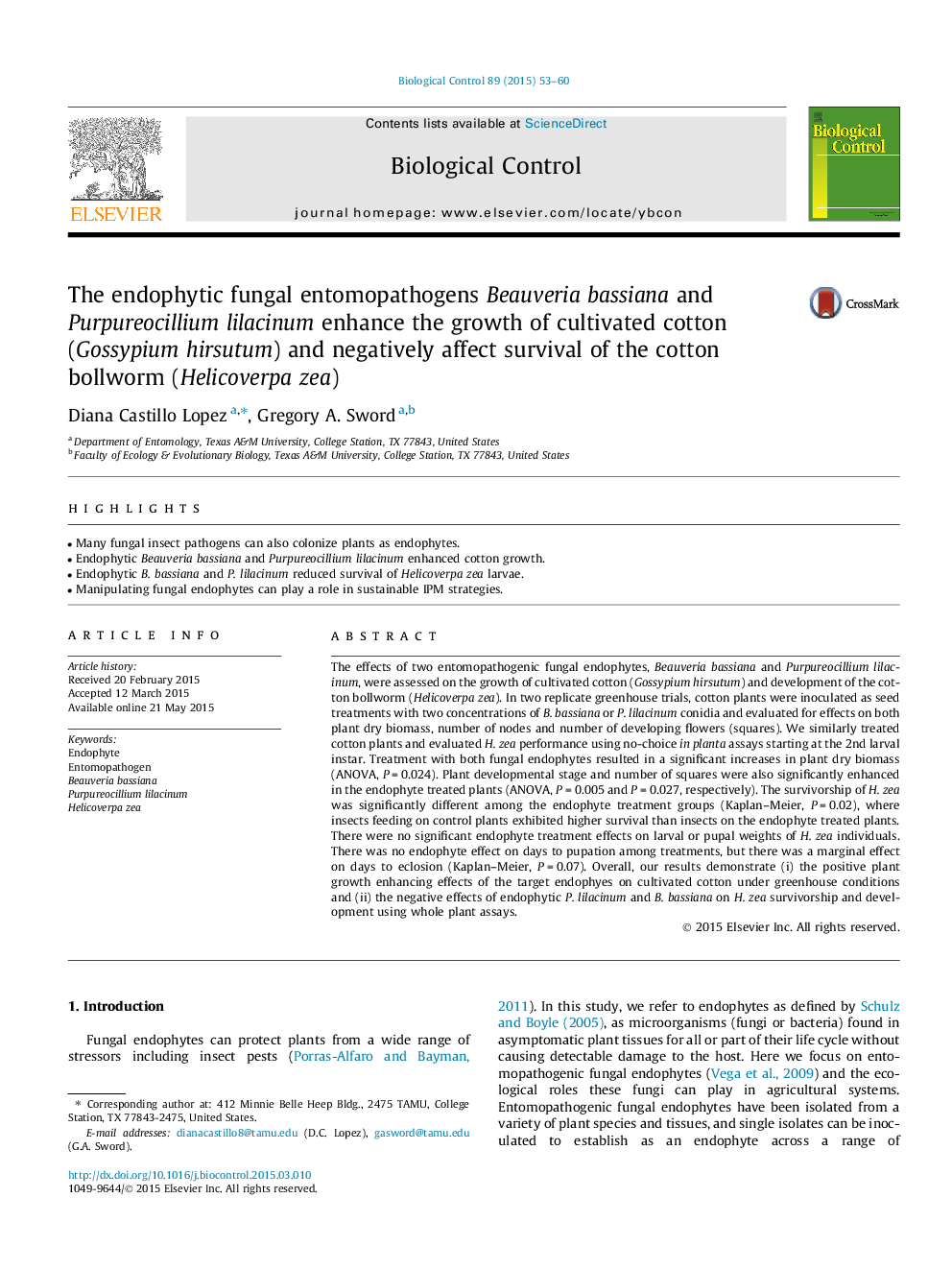| Article ID | Journal | Published Year | Pages | File Type |
|---|---|---|---|---|
| 4503744 | Biological Control | 2015 | 8 Pages |
•Many fungal insect pathogens can also colonize plants as endophytes.•Endophytic Beauveria bassiana and Purpureocillium lilacinum enhanced cotton growth.•Endophytic B. bassiana and P. lilacinum reduced survival of Helicoverpa zea larvae.•Manipulating fungal endophytes can play a role in sustainable IPM strategies.
The effects of two entomopathogenic fungal endophytes, Beauveria bassiana and Purpureocillium lilacinum, were assessed on the growth of cultivated cotton (Gossypium hirsutum) and development of the cotton bollworm (Helicoverpa zea). In two replicate greenhouse trials, cotton plants were inoculated as seed treatments with two concentrations of B. bassiana or P. lilacinum conidia and evaluated for effects on both plant dry biomass, number of nodes and number of developing flowers (squares). We similarly treated cotton plants and evaluated H. zea performance using no-choice in planta assays starting at the 2nd larval instar. Treatment with both fungal endophytes resulted in a significant increases in plant dry biomass (ANOVA, P = 0.024). Plant developmental stage and number of squares were also significantly enhanced in the endophyte treated plants (ANOVA, P = 0.005 and P = 0.027, respectively). The survivorship of H. zea was significantly different among the endophyte treatment groups (Kaplan–Meier, P = 0.02), where insects feeding on control plants exhibited higher survival than insects on the endophyte treated plants. There were no significant endophyte treatment effects on larval or pupal weights of H. zea individuals. There was no endophyte effect on days to pupation among treatments, but there was a marginal effect on days to eclosion (Kaplan–Meier, P = 0.07). Overall, our results demonstrate (i) the positive plant growth enhancing effects of the target endophyes on cultivated cotton under greenhouse conditions and (ii) the negative effects of endophytic P. lilacinum and B. bassiana on H. zea survivorship and development using whole plant assays.
